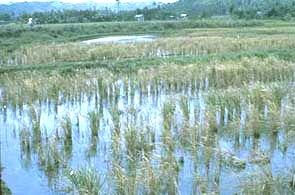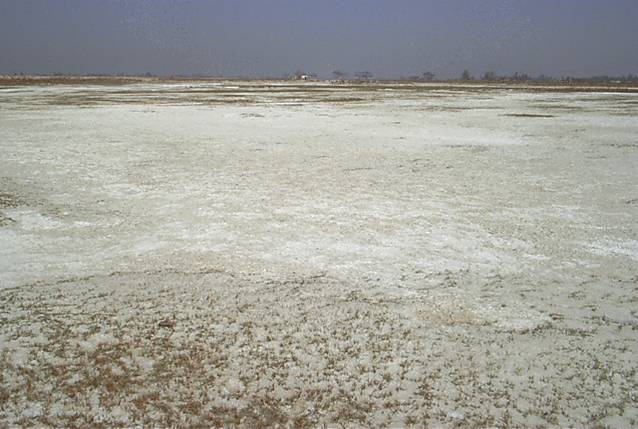
|
||
Stress Management :: Salinity |
||
About Salinity Salinity is a major factor affects crop growth and productivity at global level. Salt stress in plants is developed due to excess salt in the soil, which reduces the water potential of the soil and making the soil solution unavailable to the plants. This effect is termed as physiological drought. According to the estimates, about one third of the irrigated land on the earth is affected by salt stress. Out of 1.5 billion ha of cultivable land at global level, 23% are affected due to salinity and 37% by sodicity. Salinity: It is caused due to high accumulation of Ca, Mg as well as sodium and then anions such as SO4, NO3, CO3 and HCO3, Cl, etc. Sodicity: it is due to high accumulation or high concentration of sodium in the soil. Causes for soil salinitySalt stress mainly occurs due to two factors 1. Irrigation water Continuous usage of underground water for irrigation which brings excess salt from the underground region 2. Types of soil Under rainfed condition, because of high evapotranspiration, water moves upward through the soil profile and forming salt crusts on the surface of the soil
Classification1) Saline soils Salt concentration is more and EC of the soil is > 4 dS/m Exchangeable sodium percentage is < 15 pH is below 8.5 2) Non saline- alkali soil: (sodic soil) Low soluble salts, EC < 4 dS/m Exchangeable Na percentage is > 15 pH is > 8.5 3) Saline alkali soils High concentration of soluble salts with ESP is greater than 15 |
||
| © All Rights Reserved. TNAU 2008-2024. |
||

